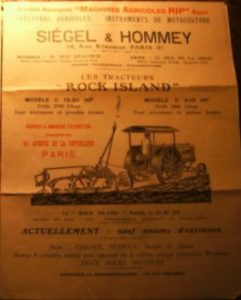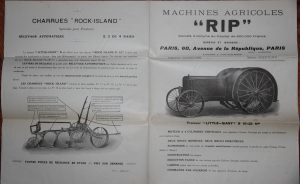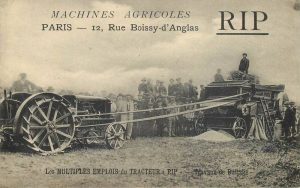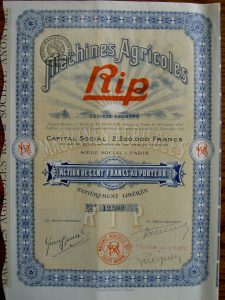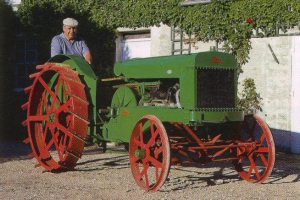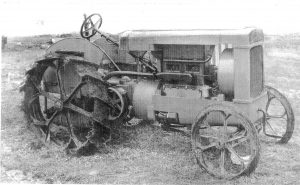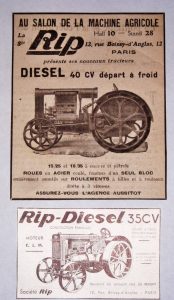I have only a little information on the Rip company, it is virtually unknown in the US and I found little documented and only brief mention in a couple of print resources. Documentation seems to be exceptionally poor over all, so the dates mentioned may not be the most reliable. Due to the size of this section, I have now split it into this page in reference to the company, and a second page devoted solely to the Rip Tractuer.
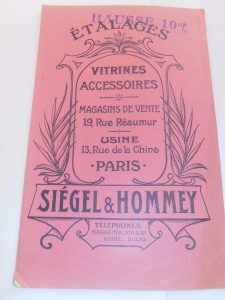 The Rock Island Plow Company was a global company even in the late 1800’s, and so it is no surprise that their tractors also found their way to Europe. The Rock Island Historical society has a handful of envelopes from correspondence in France and Wendel in “150 years of J.I. Case” has a picture of the first Heider demonstration that occurred in 1917 in Noisy-le-Grande. He dates this to 1918, and makes no mention of “Machines Agricoles Rip”, but the photo is more likely from 1917. This Heider does bear the name “M. Siegel & Hommey” who were the original importers of Heiders to France and appear to have been involved in importing other American tractor companies as well. This appears to have continued after the incorporation of RIP as I have a RIP advertisement featuring the “Little Giant” 16-22 of Mankato Minnesota tractor even pulling a Rock Island Plow.
The Rock Island Plow Company was a global company even in the late 1800’s, and so it is no surprise that their tractors also found their way to Europe. The Rock Island Historical society has a handful of envelopes from correspondence in France and Wendel in “150 years of J.I. Case” has a picture of the first Heider demonstration that occurred in 1917 in Noisy-le-Grande. He dates this to 1918, and makes no mention of “Machines Agricoles Rip”, but the photo is more likely from 1917. This Heider does bear the name “M. Siegel & Hommey” who were the original importers of Heiders to France and appear to have been involved in importing other American tractor companies as well. This appears to have continued after the incorporation of RIP as I have a RIP advertisement featuring the “Little Giant” 16-22 of Mankato Minnesota tractor even pulling a Rock Island Plow.
At some point in the late teens; Rip was established as an import company for RIPC prior to or in early 1919. Some literature from this time period uses both “Machines Agricoles Rip” and “Siegel & Hommey” on advertisements. At this time, I do not know just how diverse RIP was in importing non Rock Island material or the circumstances of Siegel & Hommey choosing to incorporate Societe Des Machines Agricoles RIP. Without more information on Siegel and Hommey’s imports, it is hard to say, but certainly it seems likely Rock Island was one of if not their largest single company. In late 1919, apparently under license from RIPC, they began to produce a French built version of the Heider C 12-20. In October of 1919, RIP began selling stock to increase capitol from Fr. 600,000 to Fr. 2,200,000 which was likely required for production start up costs to produce a tractor in house. Due to heavy tariffs and supply constraints, it was far more economical to produce a tractor in France then to import one in. Many other companies including IHC and Austin had also taken the same measures.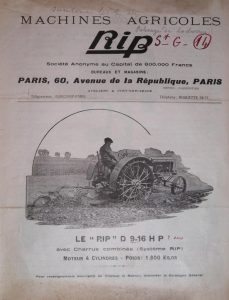
The New RIP 10-18 Tracteur featured the same basic friction drive design as the Heider C, apparently with the same Waukesha M engine with a two bottom plow on a lift. However a later brochure, the rating had been upped to 12-22, and it is shown with a three bottom plow. The frame and gas tanks are obvious design changes, but even the over all size seems smaller from the pictures than the C 12-20. This now begs the question, were there two models, one based on the Heider D 9-16 and one based on the Heider C 12-20? Currently, I have found no other information then these two paper items to indicate this. It appears RIP had exports to Italy and Egypt so the actual extent of the company is unknown.
During the mid or late 1920’s, the Rip company diverged from RIPC in the development of a more modern tractor. I have no indication of when this split occurred, but eventually the Rip friction drive design was intended to be replaced with two completely new models, a 15-25 and 18-35 using a diesel engine. An early model may have used a French built CLM engine and later models a Mercedes-Benz. Production ended in 1939 with WW2 and was never resumed. There is some question as to whether the diesel Rip ever made it into full production or on what scale. It is also unknown as to how far the company diverged, certainly RIP outlasted its parent company, but were ties severed even before? Certainly at this time there seems to be no evidence that later RIP designs came back to the parent company or how closely RIP was associated with RIPC post WW1.
At least four of the RIP Heider style tractors are known to exist in France, one of which is not restored. At least on of the later RIP’s also exists. .
I would really like to know more about this company and the circumstances around it. If anyone can point me towards some sources of information I would appreciate it.
Thank you to David Parfitt for pointing me towards this chapter of RIPC history and to Christophe for the ads and Marcel for the RIP Diesel photo below.
